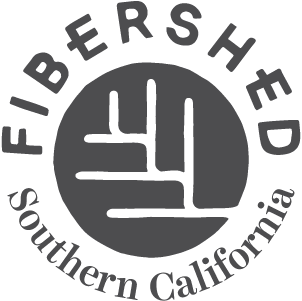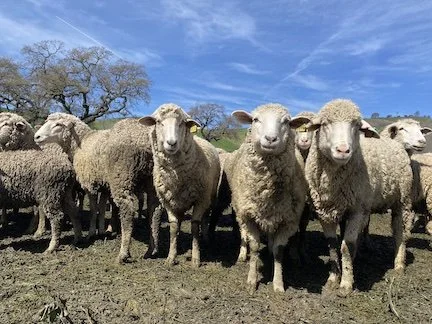Policy & Advocacy
We’ve gathered some resources pertaining to federal and state policy work in the textile-fashion-environmental landscape, as well as links to a few action points or recommendations we can implement as individuals. If you’re interested in advocacy-education in our fibershed and would like to take on an organizing role, sharing information and activities with the So Cal region, please reach out! We’d love your help keeping us all better informed and sharing opportunities for action.
We’ve all heard the alarming news: rising levels of CO2 emissions from the fashion industry; the increasing rate of consumption; microplastics in our water, air, and even brains; the heartbreaking and toxic mounds of textile waste piling up in Ghana, Chile, and elsewhere; the disregard for human life and dignity of the people in our textile supply chains. We have an opportunity through public policy at the state and federal levels to address these issues. And we can take steps within our own homes and habits to reduce our impact.
-

PASSED! Responsible Textile Recovery Act of 2024
SB-707 (CA state, led by State Senator Josh Newman) enacts a stewardship program requiring a producer of apparel or textile articles to submit a complete plan for the collection, transportation, repair, sorting, and recycling, and the safe and proper management of apparel and textile articles in the state. Link to press release.
-

The Fabric Act
The Fashioning Accountability and Building Real Institutional Change (FABRIC Act), would protect nearly 100,000 American garment workers and revitalize the garment industry in the United States by improving working conditions, reforming the piece-rate pay scale and investing in domestic apparel production.
-

Garment Worker Protection Act (SB62)
Senate Bill 62 (SB 62), also known as the Garment Worker Protection Act, went into effect in California January 1, 2022. The law makes it illegal for garment workers to be paid piece rate. Garment workers must be paid an hourly rate not less than the minimum wage.
-
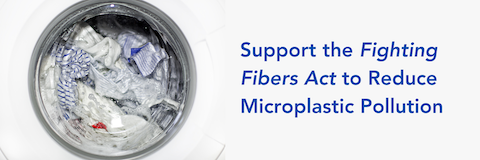
The Fighting Fibers Act of 2024
Introduced by Oregon's U.S. Senator Merkley, the Fighting Fibers Act focuses on reducing microplastic pollution by requiring that all new washing machines sold or offered for sale in the United States contain a microfiber filtration system.
-
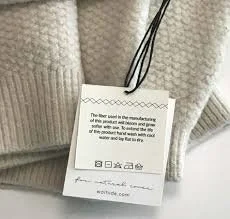
Voluntary Sustainable Apparel Labeling Act
The Voluntary Sustainable Apparel Labeling Act, proposed by U.S. Congresswoman Salazar (FL) and Congressman Casten (IL) aims to provide consumers with clear, accurate information about the impact of climate change on apparel products.
-
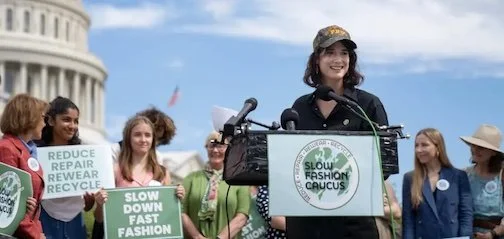
Slow Fashion Caucus
In June 2024, Congresswoman Chellie Pingree (D-Maine), ranking member of the House Appropriations Interior and Environment Subcommittee, alongside Reps. Marie Gluesenkamp Perez (D-Wash.) and Sydney Kamlager-Dove (D-Calif.), announced the first-ever Congressional Slow Fashion Caucus to curb fast fashion pollution through climate-smart policies.
reduce, repair, rewear, and recycle
-

CPSC Textile Stewardship
CalRecycle reports that over one million tons of textiles are disposed of each year in CA, with no permanent program in place to properly handle this growing waste stream.
The California Product Stewardship Council (CPSC) is leading several textile recovery projects, making partnerships and policy development that expand circular fiber systems with reduced cost-burden on local government and taxpayers through producer engagement.
-

Extended Producer Responsibility (EPR)
Extended Producer Responsibility (EPR) is a strategy to place a shared responsibility for end-of-life product and packaging management on the producers, and all entities involved in the product chain, instead of the general public; while encouraging product design or redesign that minimizes the negative impacts on human health and the environment.
-
Personal Habits
Buy Less. Wash Less. Waste Less.
Reports estimate that as much as 60% of the clothes we wear today are made of plastic. Fibers such as nylon, spandex, and polyester are derived from fossil fuels and, like all plastics, don’t break down in the environment. Low-quality fast fashion items are dumped in countries that can’t properly manage the waste, while tiny microfibers constantly shed from our clothing and make their way into our air, oceans, food, and bodies. What can we do? . . . It starts with doing less.
-
Community Projects
Join your local Commons or (as much as we loathe Facebook), your local Buy Nothing community. Trade and Barter with your neighbors and friends.
Grow food in your yard, on your balcony, in a window box. Plant herbs and fruits and vegetables you can eat, also use for natural dyestuffs. Forage - where legal and where appropriate.
Support community gardens, support local efforts to reduce and eliminate residential pesticide use, remove lawns and grow native plants instead.
-
Politically In Fashion
Hilary Jochmans is the Founder of PoliticallyInFashion, a community for all those in fashion – designers, manufacturers, artisans, retailers, models, lawyers, reporters, consumers – to learn about legislative and regulatory issues of key importance to the industry.
The mission is to educate individuals on public policy; and empower them with this knowledge; to then engage with elected representatives on how these issues impact companies and consumers.
-
Advocacy, Write Letters, Call, Vote
Some of us may be inclined to get more involved in local politics by running for office or attending city council meetings.
We can also get in the habit of calling and writing our local, state, and federal representatives.
-
Microfiber Consortium
Leading the textile industry in reducing microfibre release to protect our environment
Fibre fragmentation from textiles is intrinsically connected to biodiversity loss, environmental pollution, and climate change 🌍.
🐠 Biodiversity Loss: Microfibres can be ingested from water, food or air and have effects such as tissue damage, reduced food intake, reduced growth and increased mortality.
🌿 Environmental Pollution: Microfibres cause pollution to the environment through water, air and land. Millions of microfibres are generated from laundry cycles. Although wastewater treatment plants are built to mitigate this pollution, only around 20% of wastewater globally is treated by wastewater treatment plants.
🌍 Climate Change: At least 30% of all microplastics are microfibres from textiles. Recent research has uncovered links with microplastics altering carbon sequestration, greenhouse gas emissions and atmospheric cooling. -
Plastic Pollution and Human Rights
In a potentially-monumental step for our health and our future, the The United Nations Human Rights Council (UNHRC) has unanimously decided to commission a study on the implications of plastic pollution on human rights. 🌱 Titled ‘Plastic pollution implications on the full enjoyment of human rights’ the report will be published in 2027.
Back in 2022, the UN General Assembly declared access to a clean, healthy and sustainable environment a human right. Plastic pollution poses a material risk to this right, along with numerous others associated with health, gender equality, working conditions and more. -
Atlas for A Green New Deal
Taking on current climate challenges requires that we ask some big—and unsettling—questions. What will be lost—economically, culturally, psychologically, physically—should the climate crisis continue unabated?
How can we come together around a response to the crisis that will reshape how and where we live? How can we begin to think about investments in the built environment as a catalyst for the broader aims of decarbonization, adaptation, and social justice at a meaningful scale?
The Green New Deal does not pretend to have all the answers, but it’s a bold and necessary start. Because it connects social change with environmental change, and because it recalls the ambitious spirit of the original New Deal, the Green New Deal is the only set of ideas on the table that is scaled to the challenges we face.
If realized, the Green New Deal would revolutionize our systems of production, our ways of life, and the places we inhabit, enabling us not only to adapt to the climate crisis, but to address its root causes.
Why Natural is better than Synthetic!
The Fire Safety Research Institute (FSRI) filmed a powerful video capturing a side-by-side burn comparison of natural and synthetic home furnishings. The flashover moment (when the room becomes wholly engulfed) is alarmingly quick for the synthetic room. What is even more powerful is how much slower, significantly slower, the room made of natural materials burns. Check out the video below, and link through to the FSRI website for more details. And say a bit of thanks to your friendly, local sheep!
